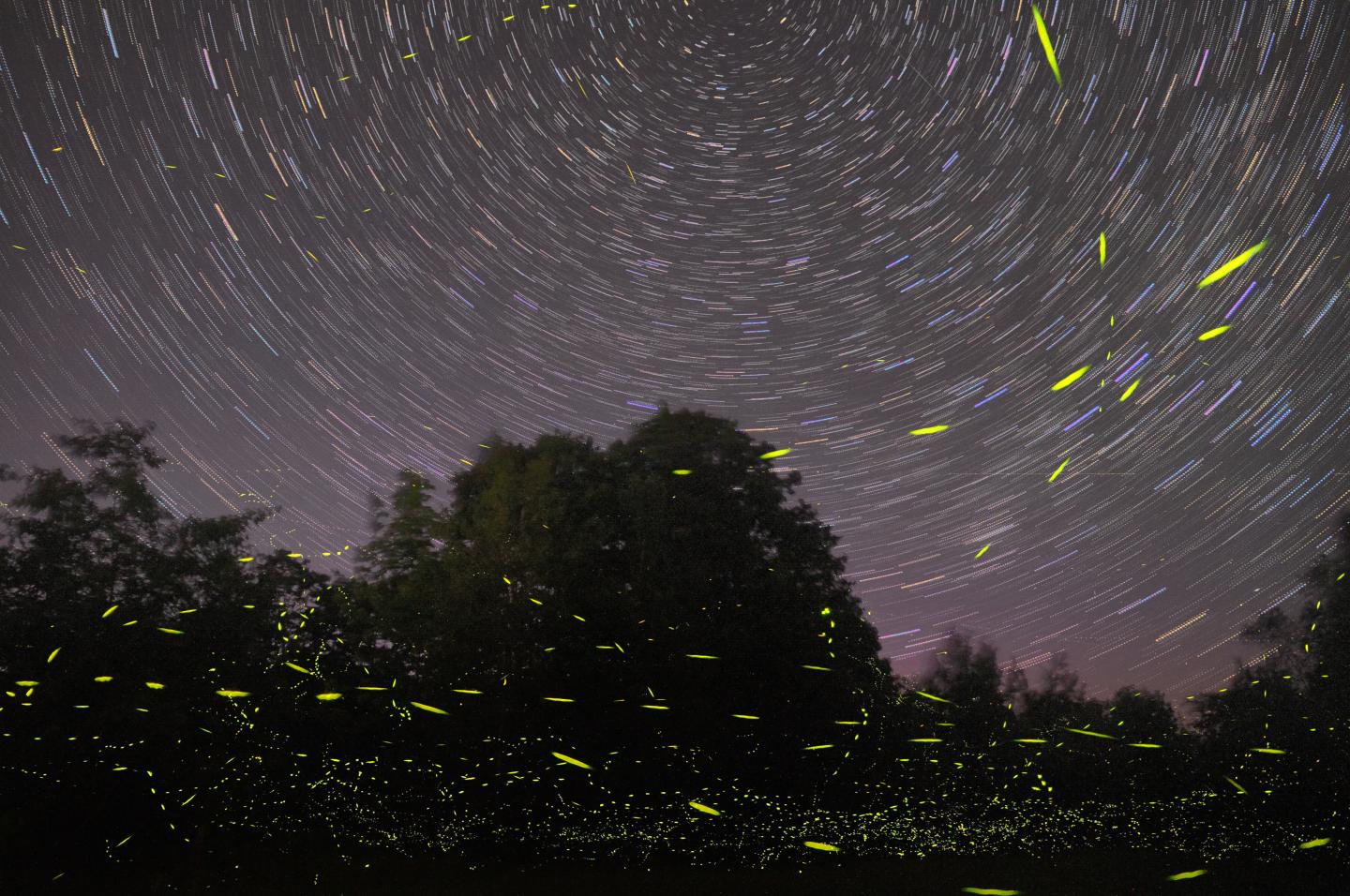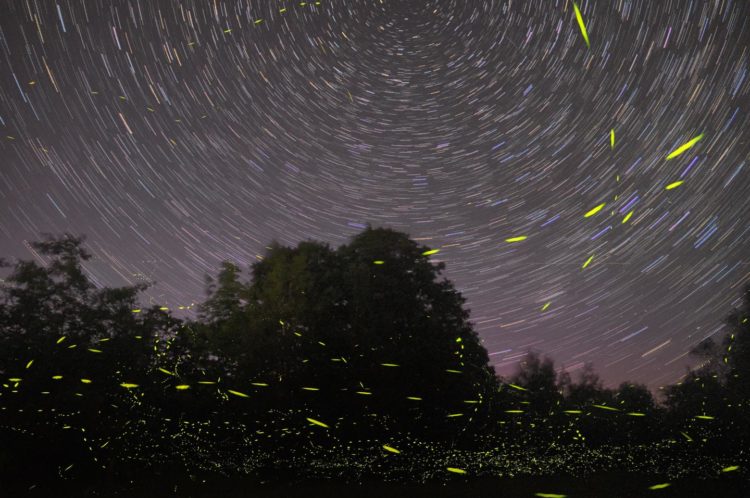
Credit: Mike Lewinski on Unsplash.
The BioScience Talks podcast features discussions of topical issues related to the biological sciences.
Worldwide declines in insect populations have sparked considerable concern among researchers and members of the general public alike. To date, however, significant research gaps exist, and many insect threats remain under-investigated and poorly understood. For instance, despite their charismatic bioluminescent displays and cultural and economic importance, the 2000-plus species of firefly beetles have yet to be the subject of a comprehensive threat analysis.
Writing in BioScience, Sara M. Lewis of Tufts University and her colleagues aim to fill the gap with a broad overview of the threats facing these diverse and charismatic species–as well as potential solutions that may lead to their preservation into the future. Lewis and colleagues catalog numerous threats, foremost among them habitat loss, followed closely by artificial light and pesticide use. The future is not bleak, however, and the authors describe considerable opportunities to improve the prospects of bioluminescent insects, including through the preservation of habitat, reduction of light pollution, lowered insecticide use, and more-sustainable tourism. Dr. Lewis and coauthors Candace Fallon and Michael Reed join us on this episode of BioScience Talks to shed light on these challenges and opportunities.
To hear the whole discussion, visit this link for this latest episode of the BioScience Talks podcast.
###
BioScience, published monthly by Oxford Journals, is the journal of the American Institute of Biological Sciences (AIBS). BioScience is a forum for integrating the life sciences that publishes commentary and peer-reviewed articles. The journal has been published since 1964. AIBS is an organization for professional scientific societies and organizations, and individuals, involved with biology. AIBS provides decision-makers with high-quality, vetted information for the advancement of biology and society. Follow BioScience on Twitter @BioScienceAIBS.
Oxford Journals is a division of Oxford University Press. Oxford Journals publishes well over 300 academic and research journals covering a broad range of subject areas, two-thirds of which are published in collaboration with learned societies and other international organizations. The division been publishing journals for more than a century, and as part of the world’s oldest and largest university press, has more than 500 years of publishing expertise behind it. Follow Oxford Journals on Twitter @OxfordJournals
Media Contact
James M. Verdier
[email protected]
703-517-1362
Related Journal Article
http://dx.





